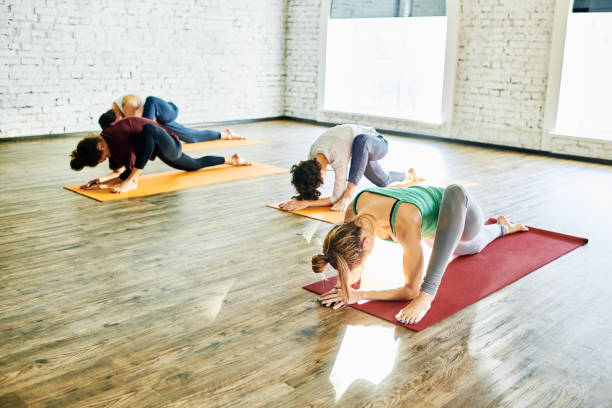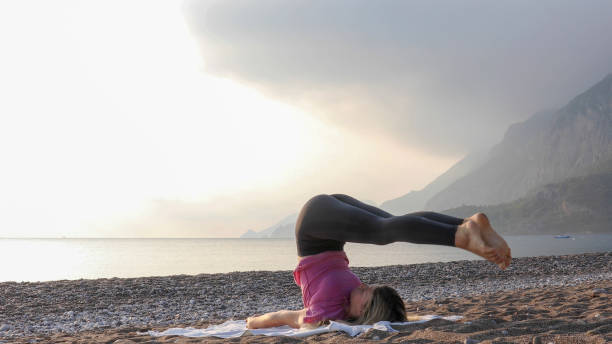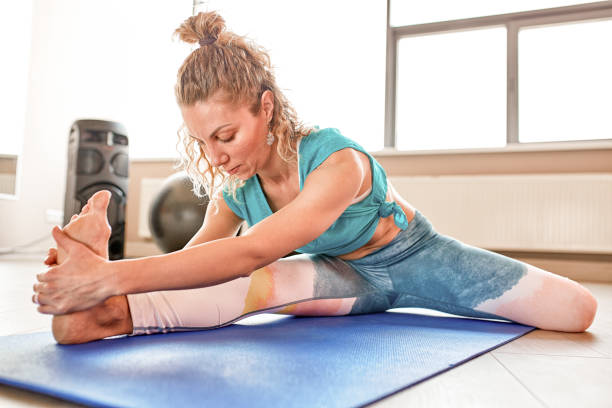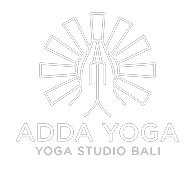Yin Yoga Definition: Everything You Need to Know

Yin yoga is a gentle form of Yoga that uses passive, longer-held positions to delve deeper into our bodies.
It addresses our connective tissues, which include ligaments, bones, joint cartilage, deep fascia systems throughout the body, and channels.
These are the innermost tissues in the human body. Conversely, a Yang yoga style that focuses on the body’s muscles is called Vinyasa yoga.
Yin yoga enhances the circulation of chi in each organ by improving the movement of energy. We require both strong muscles and functioning organs to live well. Wonderful advantages for emotional and mental wellness are also provided by yin yoga.
Yin Yoga classes involved long holds, with yin yoga sequences over long periods of time ( up to 5 minutes ), working on your deeper connective tissues and muscular tissue and joint mobility. You will be using Yoga props and breathing techniques
What’s the Definition of Yin Yoga? Yin principle for your practice

Yin yoga is restorative yoga that emphasizes your inner connective tissues, such as the ligaments, joints, and fascia, whereas “yang” yoga concentrates on your muscles.
It’s more contemplative and slower, allowing you more time to focus within and become aware of your physique’s bodily sensations as well as your thoughts.
Yin yoga teaches you how to inhale through pain and stay with what you’re thinking while also helping you relax and expand those seldom utilized tissues since you’re holding postures for longer than you’d do in conventional styles of yoga.
The more contemplative and slower-paced variation of the well-known physical and spiritual practice of yoga is called yin yoga.
The Yin Yoga’s Origin and History

Long-held positions and breathing exercises were part of the traditional yin yoga practice, which has its roots in ancient India.
Going as early as two thousand years ago, it was imparted to Kung-Fu experts to assist them in advancing their martial arts abilities. However, the yin form of yoga was not presented to the Western community until the 1970s.
In the latter part of the 1980s, Yin Yoga was founded. Paul Grilley, the founder, was astounded by Paulie Zink’s flexibility when he saw a TV broadcast of the Taoist yoga teacher and martial arts winner.
Grilley eagerly enrolled in Zink’s Taoist Yoga sessions and experimented with holding poses for five to ten minutes at a time. Grilley went home to resume doing dynamic yoga poses like Vinyasa Yoga following months of training, without seeing the desired effects.
He eventually started instructing pupils in some passive relaxation techniques. The outcomes were astounding; he observed his students’ variety of motion rapidly improving.
Drawing on Buddhist philosophy, he named his courses Yin Yang Yoga. With its emphasis on passive poses, Sarah Powers, one of Grilley’s students, recommended Yin Yoga, perhaps a more fitting moniker. Thus, Yin Yoga came into being.
Yin Yoga’s 3 Tattvas: Time, Stillness, and Edge

Tattva means the essence or actuality of anything. Three basic tattvas are available throughout the Yin yoga application:
Edge: The depth to which you dive in each position is your edge. The goal is for you to get to the place where your body stops effortlessly and to settle there; it is a highly personal exercise. Your edge will gradually shift, allowing you to hold a stance for longer.
Stillness: Once you’ve located your edge, hold onto it (as you can while you’re pain-free). Your deep connective tissues loosen as you rest in Yin positions.
Time: Yin stretches are held for extended periods. This allows you to fully relax into each posture so that you may reap the greatest benefits from them.
Process of Yin Yoga:

If you’re new to yin yoga, it’s recommended that you perform under the guidance of an instructor. Although yin postures are quiet and profound, you will be guided during each session by an instructor.
Yin yoga sessions emphasize inward inquiry at a leisurely pace. A yin yoga teacher will motivate you to explore each posture and discover how your particular flexibility in motion suits you, no matter your level of expertise.
Each human body is different, thus each person will have a different physical alignment and range of motion in their joints.
Regarding the postures themselves, a lot of yin yoga poses involve sitting or reclining positions since they call for completely relaxed muscles.
Consider the frog stance, the butterfly pose, or the sitting forward fold. Make an effort to find calmness in each stance. Try your best not to fidget or move about so that you can release completely into the position.
You want to exert yourself until you get a profound sensation that allows you to lengthen your ligaments & fascia; this is referred to by practitioners as “comfortable discomfort”. But you should never exert yourself to a level of pain.
In addition, breathing is a key element of yin yoga as it provides you with something to concentrate on throughout the more challenging and uncomfortable poses.
You will breathe through your diaphragm when practicing yin; feel your abdomen and ribs widen with each inhale, and bring your belly button into the spinal column with each exhalation.
How does it work for your body?

Yin yoga significantly affects the body’s connective tissues with longer hold . With yin yoga, the emphasis is not on muscles as in traditional yang yoga, but rather on the fascia, ligaments, tendons, capsules that surround joints, bones, etc.
Because the practice focuses on the human body’s “yin” connective tissue, it moves slowly and deliberately, effectively targeting these “deeper” aspects of the appearance.
Additionally, the exercise could concentrate on connective tissues better by holding each posture for a lengthy time.
Furthermore, it is thought that yin yoga promotes the creation of stronger and better-organized fascia in addition to increased bone density by using poses that purposefully compress various body areas.
Yin also does a lot of mental work. The practice strongly supports meditation throughout since it is a very introspective exercise with extended stays (usually kept in silence or when listening to intellectual lectures), which inevitably influences the mind.
Yin Yoga Positions and Techniques

It’s possible that you’re accustomed to doing yoga poses like downward dog and tree pose, where you have to balance on one of your legs. However, yin yoga doesn’t require any standing at all. You perform all yin yoga positions while sitting or lying down.
Several of the many widespread yin yoga poses are:
- Child’s Pose.
- Savasana.
- The butterfly pose.
- Dragon Pose.
- The Sphinx Pose.
- Reclined Twist
In contrast to Ashtanga yoga, which always follows the same order, yin yoga allows you to tailor the posture sequence to fit your own goals, schedule, and degree of expertise.
For instance, your yin yoga practice would incorporate several decompression poses like sitting forward folds, sphinx, or savasana when you suffer from lower back discomfort.
Conversely, if your hips are stiff, you may want to substitute butterfly position, dragon posture, and reclining twist in the order you do it.
Benefits of Yin Yoga
Rejuvenating Fascia

The fascia, or thin layer of connective cells that envelop each component of the human body, is stimulated and stretched by frequent Yin Yoga practice. Regular stretching increases the fascia’s adaptability, which enhances the body’s general function and nutrition delivery.
Joint and the Ligament Health

Our ligaments have a built-in tendency to tighten up over time. By applying a mild yet effective strain to these tendons, yin yoga preserves and even expands the degree of movement in our joints.
Yin yoga effectively counteracts the detrimental consequences of an inactive or desk-bound existence by strategically pressing the joints, reviving and replenishing their critical fluids. Stated differently, we prolong our youth by elongating our ligaments.
Enhances Adaptability

Exercises with a lot of intensity can make tendons stronger, but they can also make them stiff. A counterweight is provided by yin yoga, which stretches tendons softly and increases their flexibility.
Stretching your tendons, which join your muscle tissue to your bones, increases your muscles’ responsiveness and flexibility to a range of motions, which can help prevent injuries.
Alleviation of back pain

Because most yin postures need the legs to hold them, yin yoga works exceptionally well with the spine. This implies that performing yin yoga gives you the chance to loosen up and compress your spine because most of the postures in it directly address the spine in one way or another.
Likewise, these lower-back holds contribute to the advantages of yin yoga regarding the hips. Indeed, the greatest nerve in our bodies, the sciatic nerve, can be greatly relieved of any tension by practicing yin yoga, which can also be a great technique to release tight hips.
You will be working on your hip flexors, joint, ligament and fascia and your deeper tissues and your whole physical body. A regular practice of yin poses is the best way to get more flexibility and release stress .
Conclusion: Yin yoga definition
By maintaining poses for many minutes, yin yoga offers a special kind of yoga that helps increase flexibility in parts of the body including the hips, pelvic region, and lower spine which are frequently thought to be immobile. We believe now you have gained a clearer idea about what yin yoga entails and why it’s different from other yoga styles.
